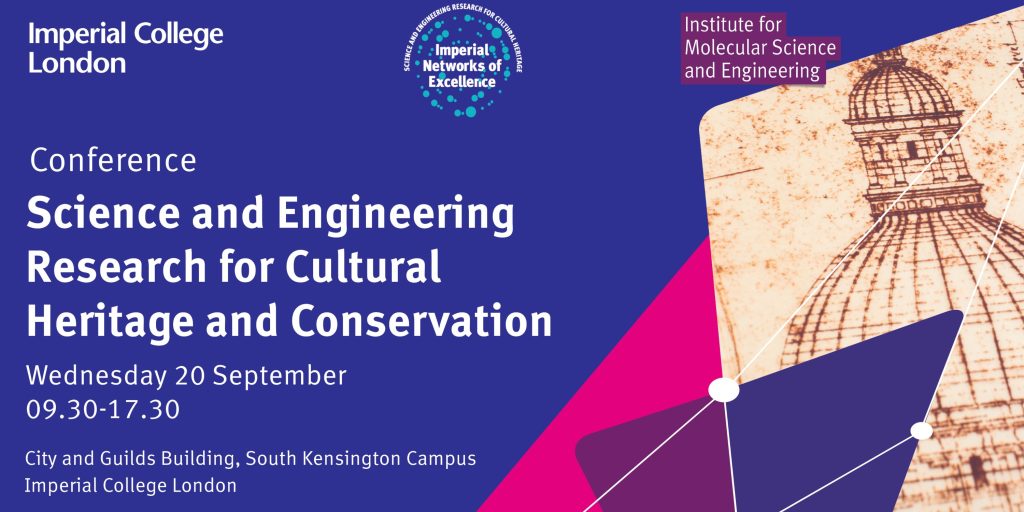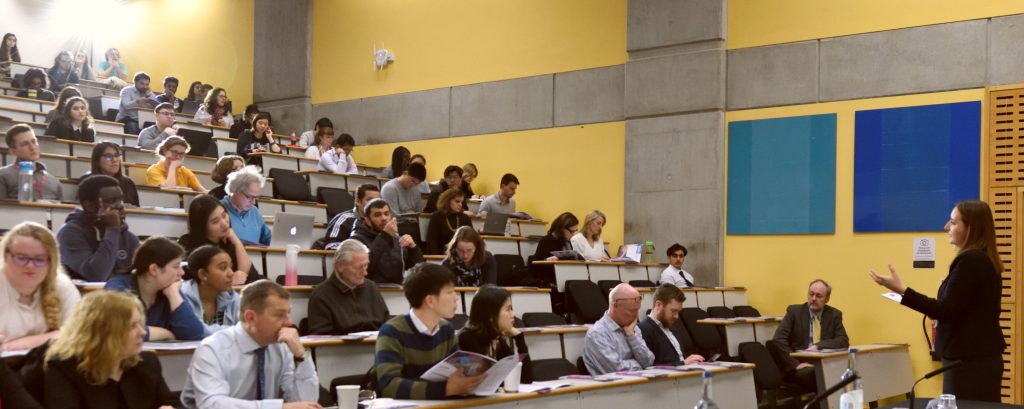The Science and Engineering in Cultural Heritage network of excellence (which IMSE supports) is hosting its first one-day conference on 20 September 2023, 9.30-17.30. This free conference is a forum for researchers, students and staff at Imperial College London and cultural heritage organisations in London to meet, explore current challenges, showcase tools/techniques, and build collaborations to solve problems.
Submit an abstract for talk, poster or demonstration here

This is SERCH’s first all-day conference. We’re growing! It’s a sign of the increasing interest in the SERCH network and cultural heritage collaborations at Imperial.
How are science and engineering topics relevant to cultural heritage?
In lots of ways! Here are some examples of the work that Imperial’s researchers have already completed and published:
Understanding long term material degradation in cultural heritage objects. Maria Charalambides has looked at the cracking of paintings due to humidity cycles.
Understanding conservation treatments of cultural heritage objects. Ambrose Taylor investigated using urushi-based conservation to treat Japanese lacquer.
Exploring how humans interact with objects. Lorenzo Picinali researched building an interactive touch surface with audio feedback.
But in addition to these (fairly traditional) ways where science and heritage interact, there are also lots of new areas where modern technologies or needs overlap in new ways with cultural heritage spaces. These are fruitful spaces for new ideas, tools and applications.
Heritage in a changing world
Here are some examples of modern technologies overlapping with cultural heritage questions.
Cultural heritage and 3D printing
3D printing has been around since the 1980s, but has become widely used since the mid-2000s. See the IMSE briefing paper for an introduction. The Victoria & Albert Museum collects modern objects and they now have 3D printed objects in their collections. The Prado Museum has been using 3D printing to make artworks accessible to visually impaired people. But usually, 3D printed objects are not designed to last. Plastic materials can start decaying quickly, even though at the same time the world is worried about long-lasting plastic pollution. So why do some plastics decay quickly, and can this be stopped? What are the best 3D printing technologies to use in cultural heritage? And can using this technology avoid creating even more plastic waste?
How can museums and galleries reduce their carbon emissions?
Many museums are housed in old and inefficient buildings. Heating and cooling these buildings to keep them at a stable temperature is good for the artefacts housed in them. But it creates considerable carbon emissions, and it’s also expensive these days. Museums are moving away from simply keeping temperature and humidity constant in a whole building, towards allowing more fluctuation, providing this is safe for the artefacts and materials. Are there other, more local, cooling and heating technologies they could use, perhaps in display cases, to keep temperature and humidity stable?
Machine learning/AI in cultural heritage
Pier Luigi Dragotti has been using AI to read imaging data, which revealed hidden drawings in Leonardo’s ‘the Virgin of the Rocks’. But there are many additional ways to use AI or machine learning or big data in cultural heritage contexts, including
- Using virtual reality to visualise the past and to explore new techniques of conservation
- Using machine learning to automate identification of objects
- Using machine learning to automate detection of deterioration in objects
There are many more potential applications of AI in cultural heritage, and they’re all interesting! Find out about the AI museum planning toolkit here.
Networking in September
These are just some of the ideas that we are hoping our colleagues across London will come and share with us on 20 September 2023.

Submit an abstract for talk, poster or demonstration here
Read about our previous collaboration with the V&A
Find out about SERCH team at the Great Exhibition Road Festival in 2022